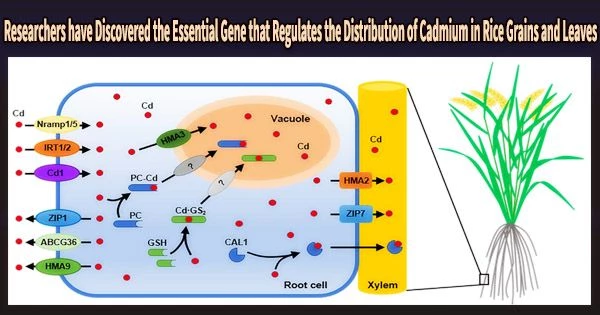By building up in crops, particularly rice, cadmium (Cd), a hazardous heavy metal pollutant of cultivated soil, causes harm to people. Thus, it is vital to develop methods to prevent Cd from building up in rice grains.
In rice, Cd is transferred from the soil to tissues above ground via the roots. In order to direct Cd in rice, the nodes, which are vascular bundles connecting to the roots, leaves, and panicles, are crucial.
A research group led by Prof. Qu Leqing from the Institute of Botany of the Chinese Academy of Sciences (IBCAS) identified a Cd metallochaperone OsHIPP9 (heavy metal-associated isoprenylated plant protein 9) through a Cd tolerance yeast screening system and characterized its function in rice using genetic, cellular and biochemical strategies.
The study has been published in Plant, Cell & Environment.
OsHIPP9 may mediate more Cd migration into the leaves rather than into the grain, which is crucial for reducing Cd levels in the grain.
Dr. Xiong Shuo
With the help of the thiol in cysteines, OsHIPP9 binds to Cd and copper (Cu), forming a stable metal-protein complex. OsHIPP9 is mostly expressed in the rice root exodermis and xylem area of expanded vascular bundles at nodes.
OsHIPP9 knockout lowered Cd in expanded leaves but increased Cd in the higher nodes and panicles, which may be related to changes in Cd distribution in the nodes.
In addition, knockout of OsHIPP9 decreased the Cu concentration in aboveground tissues in rice, whereas overexpression of OsHIPP9 increased the Cu concentration in rice plants.
These findings provided important information for controlling Cd and Cu levels in rice grains by revealing the dual metallochaperone actions of OsHIPP9, which chelate Cd in the xylem area of EVB for Cd retention in the nodes and chelate Cu in rice roots to assist Cu uptake.
“OsHIPP9 may mediate more Cd migration into the leaves rather than into the grain, which is crucial for reducing Cd levels in the grain,” said Dr. Xiong Shuo, first author of the study.





